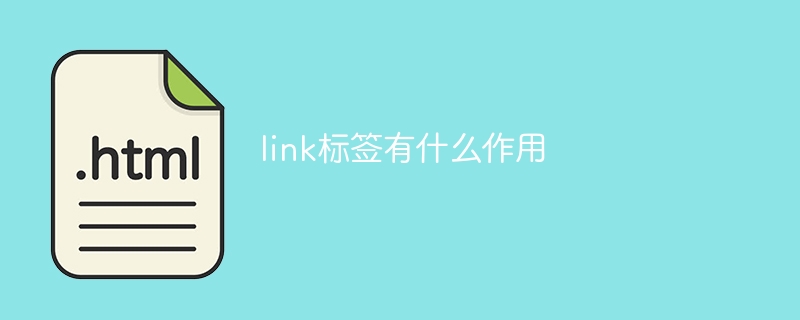Home >Web Front-end >HTML Tutorial >Functions and uses of link tags
Functions and uses of link tags
- 王林Original
- 2024-02-19 14:14:07976browse

What is the function of the link tag? Specific code examples are needed.
The link tag is one of the most common tags in HTML. It is mainly used in HTML documents. Introduce external resources, such as CSS style sheets, font files, etc. In web development, the link tag plays a very important role. It can improve the maintainability and performance of web pages, and make the HTML structure clearer and easier to read. The common attributes of the
link tag are as follows:
- href: specifies the link address of the external resource;
- rel: specifies the link between the link resource and the current document. relationship;
- type: Specify the MIME type of the link resource;
- media: Specify the media device applicable to the link resource;
- crossorigin: Specify whether the link resource allows cross-domain requests .
The following are some specific code examples to better understand the use of link tags and their effects.
- Introducing an external CSS style sheet:
<link rel="stylesheet" href="style.css">
The above code snippet uses the link tag to introduce an external CSS style sheet named style.css. In this way, we can separate styles from HTML and improve the readability and maintainability of the code. Moreover, when using the same style sheet in multiple HTML documents, you only need to specify the same href attribute in the link tag.
- Introducing font files:
<link rel="stylesheet" href="https://fonts.googleapis.com/css?family=Roboto">
The above code snippet uses the link tag to introduce a font file from Google Fonts. In this way, we can use custom fonts in web pages to improve the design effect and user experience of the web page.
- Define RSS subscription:
<link rel="alternate" type="application/rss+xml" title="RSS Feed" href="rss.xml">
The above code snippet uses the link tag to define an RSS subscription, so that users can easily subscribe to website news, blogs and other updated content . Such code is usually placed in the head area of an HTML document.
- Add icon:
<link rel="icon" type="image/png" href="favicon.png">
The above code snippet uses the link tag to add a website icon, which is a small icon displayed on the browser tab bar. This is part of the website’s visual identity and can improve users’ recognition of the website.
In summary, the link tag plays an important role in the web development process. It can introduce external resources, such as CSS style sheets, font files, etc., to make the page structure clearer and easier to read. By using the link tag, we can improve the maintainability and performance of the web page, and make full use of the browser's caching mechanism to reduce the loading time. When developing web pages, we should use link tags rationally to separate external resources such as styles, fonts, icons, etc. from HTML documents, making the code clearer and easier to maintain.
The above is the detailed content of Functions and uses of link tags. For more information, please follow other related articles on the PHP Chinese website!

